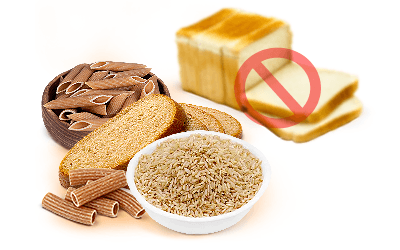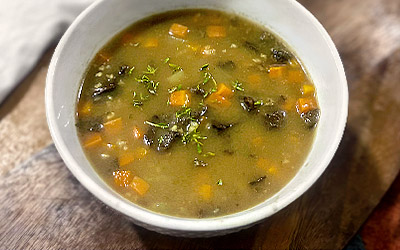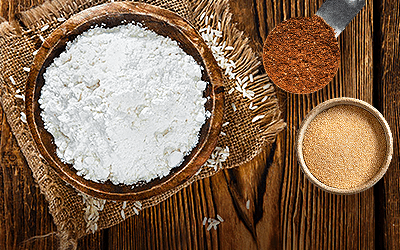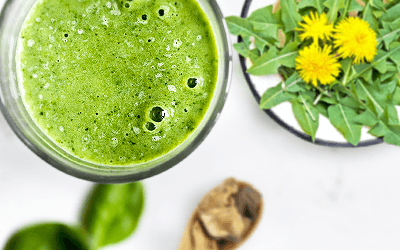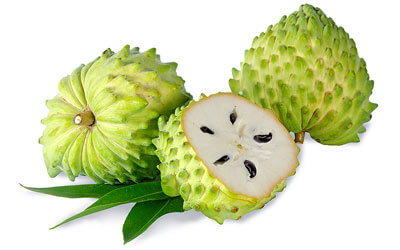Barley is one of the oldest cultivated crops in the world. It was first grown in the Middle East and is now an ubiquitous grain all over the globe, from the subarctic to the tropical regions. It is not only a dietary staple in most countries, but also provides a number of useful, lesser-known health benefits that make it a valuable herbal remedy.
Barley Medicinal Properties
- Medicinal action Hypocholesterolemic, Hypoglycemic
- Key constituents Dietary fiber, beta-glucan
- Ways to use Decoctions, Hot infusions/tisanes, Liquid extracts
- Medicinal rating (4) Very useful plant
- Safety ranking Safe
Health Benefits of Barley
This whole grain has long been a staple of people's diets, and it has also been traditionally used to treat a variety of health issues. Modern science has found that barley's properties make it useful for:
Lowering cholesterol. Barley can help regulate cholesterol levels, including improving the ratio of good and bad cholesterol.
Reducing glucose levels. Barley is also able to help manage blood sugar levels.
Scientific research on barley indicates that this grain can also boost immune response, help with weight management and metabolic syndrome, and prevent diseases such as macular degeneration.
Barley's health benefits, however, go beyond medicinal applications. On the nutritional side, barley grains provide a number of vitamins, minerals, and other compounds necessary to sustain overall health.
How It Works
Barley is thought to provide both of its medicinal benefits thanks to its high levels of dietary fiber, particularly a polysaccharide called beta-glucan, which is found in the bran of many cereal grains.
Being a type of soluble fiber, beta-glucan has the ability to form highly-viscous solutions in the human gut, as well as to promote fermentation in the colon, which improves the quality and frequency of bowel movements. The metabolic consequences of this process include a reduction in serum lipids and blood sugar levels after meals, as well as an increased sense of satiety. In this way, barley's beta-glucan has proven beneficial in reducing insulin resistance, dyslipidemia, hypertension, and obesity.1,2
Beta-glucans contribute to increasing immune defense by enhancing the function of macrophages and natural killer cells.3 They also have been shown to inhibit vascularization, which makes them useful for treating diseases that involve the development of abnormal blood vessel growth, such as macular degeneration.4
Other herbs with hypocholesterolemic properties are carob, chickpeas, and oats. On the other hand, chia, lupin, and yacon promote smooth digestion and reduce sugar spikes after meals.
Barley Side Effects
Barley is safe for most people when taken in dietary amounts. However, when taken in medicinal doses, the plant may cause abdominal bloating, gas, and cramping.
Barley Cautions
Because of its hypoglycemic action, barley may negatively interact with diabetes medications. Moreover, because of its high fiber content, it may affect the absorption of other oral medications.
In people with grain allergies, barley can cause rashes, difficulty breathing, or upset stomach. Those with celiac disease or gluten sensitivity must be aware that barley can cause them gastrointestinal discomfort and malabsorption syndrome, among other undesirable symptoms.

Barley Nutrition
Barley is particularly rich in dietary fiber, with moderate amounts of carbohydrates and protein.
The most abundant mineral in barley grains is selenium, which plays an important role in maintaining proper thyroid function and reproduction. It is also crucial for preventing free radical damage and infections. Barley grains also provide good amounts of copper and manganese, which are important for red blood cell production and bone health, respectively. Other minerals that are present in adequate amounts in barley include iron, magnesium, and zinc.
Barley is a good source of niacin (B3) and an adequate source of thiamine (B1) and riboflavin (B2). B vitamins are essential for sustaining energy and other metabolic functions.
100 grams of cooked barley grains provide 123 calories, 9% DV of carbohydrates, and 15% DV of dietary fiber.
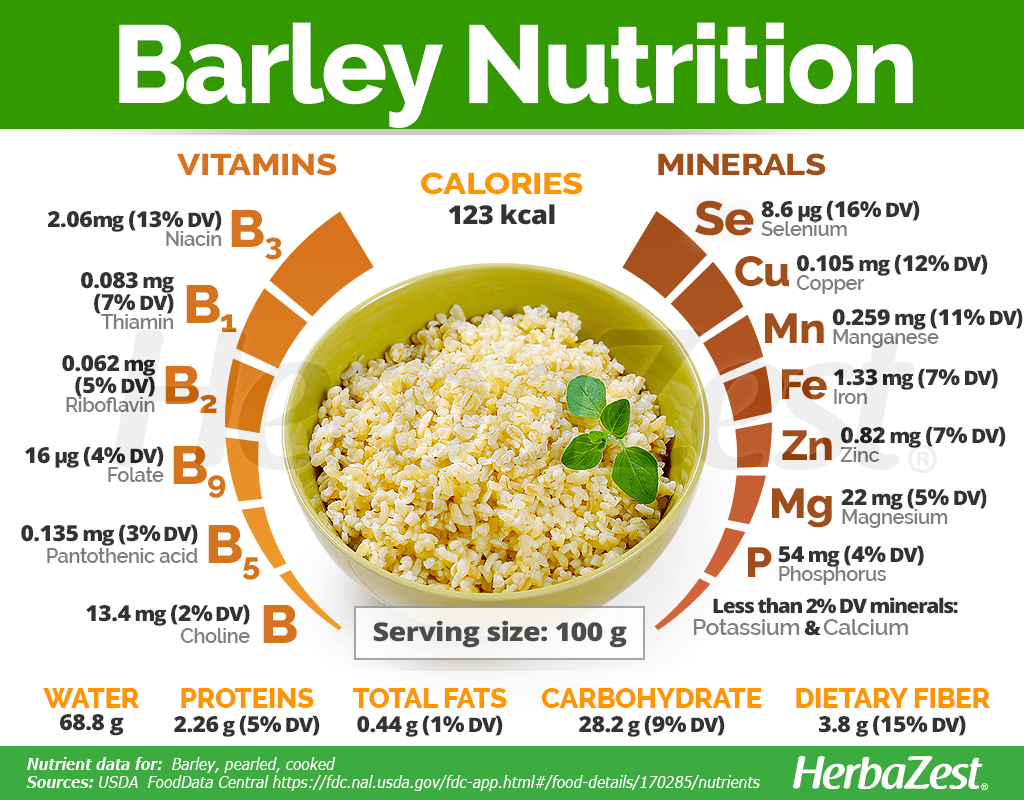
How to Consume Barley
- Edible parts Seed
- Edible uses Coloring, Protein
- Taste Earthy
Barley has a long history of culinary use, but it is also commonly used in several medicinal preparations. Either option will allow one to reap the plant's health benefits.
Natural Forms
Dried. Barley grains are hulled - removed from their inedible outer hull - before being used for consumption. They can be added to stews, soups, salads, and many other dishes.
Juice. Fresh barley grass can be taken on a daily basis as a concentrated juice that serves as a dietary aid.
Infusion. Barley tea is a popular drink in places like Japan, and it can be useful in lowering cholesterol and controlling blood sugar levels.
Decoction. Barley decoction is a concentrated preparation used to provide hypocholesterolemic and hypoglycemic effects. However, a decoction is not as concentrated as an extract.
- Oil. Extracted from the seeds, barley oil is consumed to lower cholesterol levels, as well as to improve immune and digestive functions.
Flour. The dried barley grains can be milled into flour and baked into bread or used to thicken soups and stews.
Powder. Barley grass is dried and ground, and it is usually mixed into morning smoothies to boost immunity, cardiovascular health, and digestive function.
- Syrup. Barley malt syrup is commonly used as a flavoring and browning agent for baking, and it is also added to beer.
Barley oil can be used for cooking; however, due to its complicated process of extraction, it is quite expensive and mostly used for medicinal purposes.
Did you know?
If a product is labelled gluten-free and includes barley malt, it will contain no more than 20 ppm of gluten and can be included in a gluten-free diet.
Herbal Remedies and Supplements
Did you know?
If a product is labelled gluten-free and includes barley malt, it will contain no more than 20 ppm of gluten and can be included in a gluten-free diet.
Capsules. Barley can be taken in the form of capsules, which offer the advantage of a fixed daily dose.
Extract. Liquid and powdered extracts of barley are popular preparations. Like tea and decoctions, extract can reduce cholesterol and blood sugar, but it is more concentrated and should be taken in small amounts.

Growing
- Life cycle Annual
- Harvested parts Seeds
- Light requirements Full sun
- Soil Light (sandy), Medium (loam), Heavy clay, Well-drained
- Soil pH 5.1 – 5.5 (Strongly acidic), 5.6 – 6.0 (Moderately acidic), 6.1 – 6.5 (Slightly acidic), 6.6 – 7.3 (Neutral)
- Growing habitat Temperate climates, Subtropical regions, Warm climates
- Planting time Early spring, Fall
- Potential insect pests Aphids, Armyworms, Wire worms
- Potential diseases Root rot, Smuts
- Potential animal pests Birds
Barley is commonly cultivated on a large scale by commercial farmers, but it can also be grown in a garden or backyard as long as enough space is set aside for this crop. It takes a bit of extra work, but it is worth the effort.
Growing Guidelines
Barley is propagated by seed, which is the barley grain that is eaten.
There are two major types of barley: spring barley, planted in the spring, and winter barley, planted in the fall. Unlike spring barley, the winter variety needs the cold to germinate, so it is important to know which type is being sown.
These seeds should be sown approximately one inch (2.5 cm) deep in furrows, and the furrows should be eight inches (20 cm) apart.
Barley can survive in many types of soils as long as they are well-drained.
Unlike many other grains, barley is tolerant of alkaline soils. However, it does best in soils with a pH of 6.0 - 6.5. If the soil is not acidic enough, it can be amended with lime.
Barley may not need watering if there is adequate rainfall, but in a dry area, the crop should be watered at least two to three times a week after sowing.
Fertilizers are usually not needed. It is possible to apply those that contain nitrogen, phosphorus, or potash, but too much of these fertilizers could cause weed growth or damage the yield of the plant.
Barley is very good at controlling weeds because it is a competitive crop, so weeding should not be necessary.
The grains generally ripen in warm, dry weather and can be harvested around four months after planting.
Fusarium head blight is a common disease that affects barley and must be controlled as soon as possible. Other diseases are loose smut and common root rot.
Aphids, armyworms, and wireworms may attack the plant.
Additional Information
- Other uses Alcohol, Animal feed
Plant Biology
Barley is an annual grass that can grow two to four feet (60 - 120 cm) tall and grows few leaves. It produces a spike at the top of its stem, from where flowers grow densely.
Classification
Barley, botanically named Hordeum vulgare, it is a member of Poaceae, or grass family, which is the fifth-largest plant family in existence. Some economically valuable crops in this group are maize, millet, lemongrass, oat, rice, sugarcane, and wheat.
Cultivars of Barley
Because barley is such an old cultivated plant, several cultivars have been developed for different purposes. They generally differ in their resistance to diseases as well as in the levels of certain nutrients present in the plant. For instance, the 'Foster' cultivar contains less protein, but is resistant to spot blotch, while 'Bowman' has more protein but is susceptible to loose smut.
Historical Information
Barley hails from the Fertile Crescent, an area in western Asia surrounded by several rivers, where the Mesopotamian civilization flourished, and the earliest agricultural advances were produced. Evidence suggests that wild barley was first used by humans as long ago as 8500 BCE, and by 4200 BCE, it was widely cultivated across Asia and Europe. On both continents, barley has been used for millennia as a dietary staple as well as an ingredient for brewing beer, one of the first alcoholic drinks.
Economic Data
The global production of barley is 160 million tons annually, and it is one of the top 10 crops in the world. From 1998 to 2000, Canada was the largest producer of barley, with 13.1 million tons, closely followed by Germany (12.7 million tons), and Russia (11.2 million tons). Barley is not only one of the most widely-cultivated crops, but also one of the most adaptable, tolerant to many altitudes and soil types.
Popular Beliefs
In ancient China, barley was a symbol of male potency. This was because the barley plant includes a head of grain which appears to possess a thick beard and because the plant produces many seeds.
Ancient Greek athletes often ate a type of barley dish when training for important events. They believed that their diets could influence their athletic ability and preferred this type of barley because it could be digested easily.
Other Uses
Fodder. One of the most important uses of barley is for animal feed - nearly half of the barley production in the United States is for this purpose.
Food and beer industry. Barley malt extract is a common sweetener in soymilk and other foods in North America. It is also widely used in the beer industry and as a flavoring and browning agent in baked goods.
Fish industry. In the form of pellets or liquid extracts, barley is also used in pond fisheries for keeping the water clean and feeding the fish.
Barley is a popular plant that has a high nutritional value, is featured in many types of dishes worldwide, and is useful for reducing cholesterol and controlling blood sugar.
Sources
- Coeliac UK, Barley malt extract
- Diabetes Care, The Role of Viscous Soluble Fiber in the Metabolic Control of Diabetes, 1997
- Edible Medicinal And Non-Medicinal Plants, pp. 267 - 299
- Harvard University, Harvard Medical School, Celiac disease and gluten sensitivity
- History of Soymilk and Other Non-Dairy Milks (1226-2013), p. 2045
- Journal of Nutrition and Metabolism, Beta Glucan: Health Benefits in Obesity and Metabolic Syndrome, 2012
- Minerva Medica, The biological activity of beta-glucans, 2009
- National Institutes of Health, National Cancer Institute, Angiogenesis Inhibitors
- Purdue Horticulture and Landscape Agriculture, Hordeum vulgare L.
- University of Maine, Growing Organic Barley in Maine
- University of Minnesota, Wheat and barley storage
Footnotes:
- Clinical Nutrition Research. (2020). Effect of High β-glucan Barley on Postprandial Blood Glucose and Insulin Levels in Type 2 Diabetic Patients. Retrieved June 8, 2022 from: https://www.ncbi.nlm.nih.gov/pmc/articles/PMC7015725/
- Anaerobe. (2019). Alterations in gut microbiota composition and metabolic parameters after dietary intervention with barley beta glucans in patients with high risk for metabolic syndrome development. Retrieved June 8, 2022 from: https://pubmed.ncbi.nlm.nih.gov/30396006/
- Nutrients. (2021). Ingestion of High β-Glucan Barley Flour Enhances the Intestinal Immune System of Diet-Induced Obese Mice by Prebiotic Effects. Retrieved June 8, 2022 from: https://pubmed.ncbi.nlm.nih.gov/33799564/
- Journal of Cellular and Molecular Medicine. (2015). Barley beta-glucan promotes MnSOD expression and enhances angiogenesis under oxidative microenvironment. Retrieved June 8, 2022 from: https://pubmed.ncbi.nlm.nih.gov/25388628/


